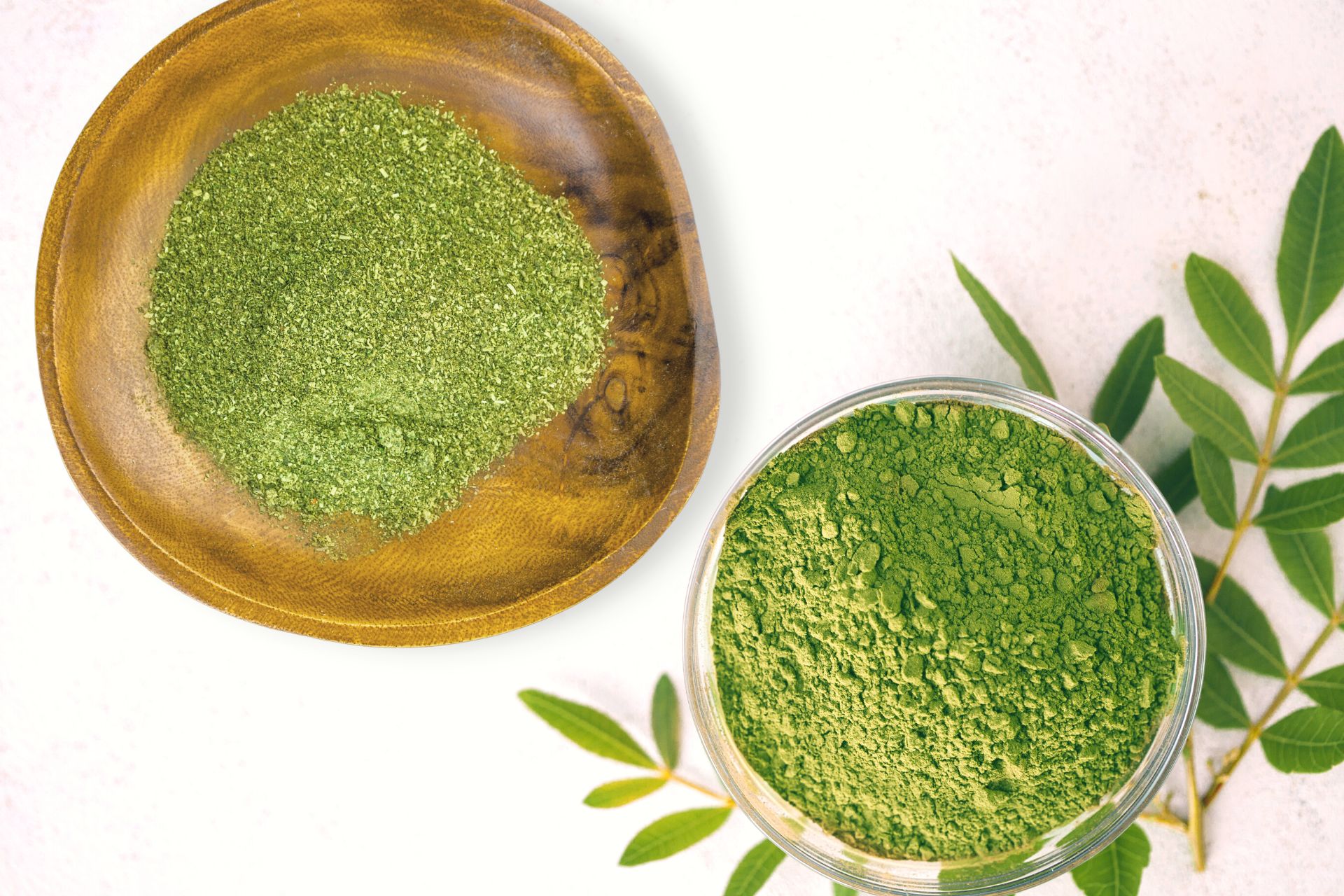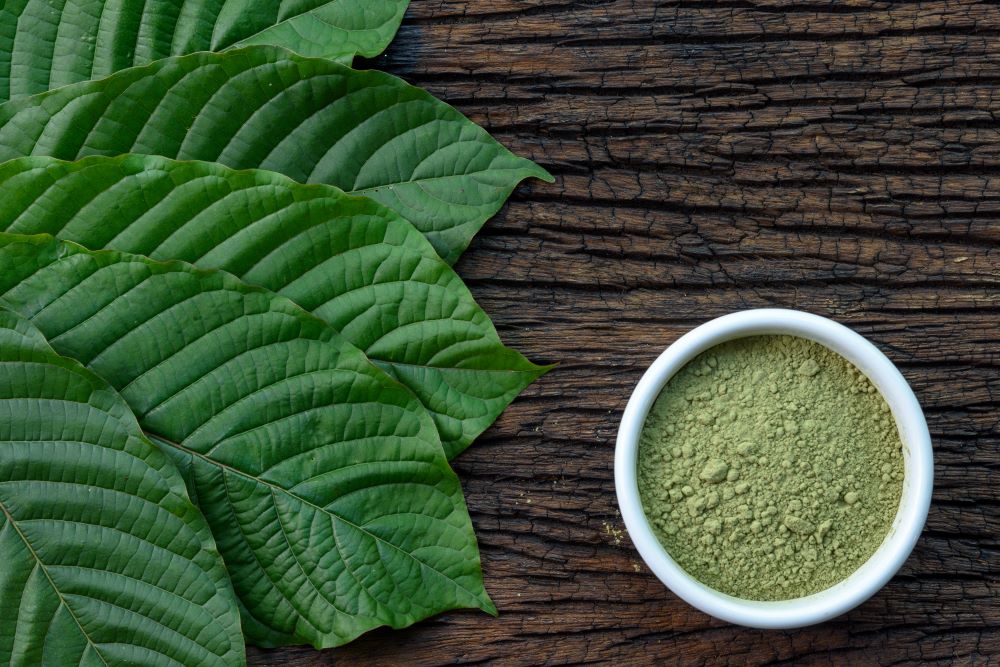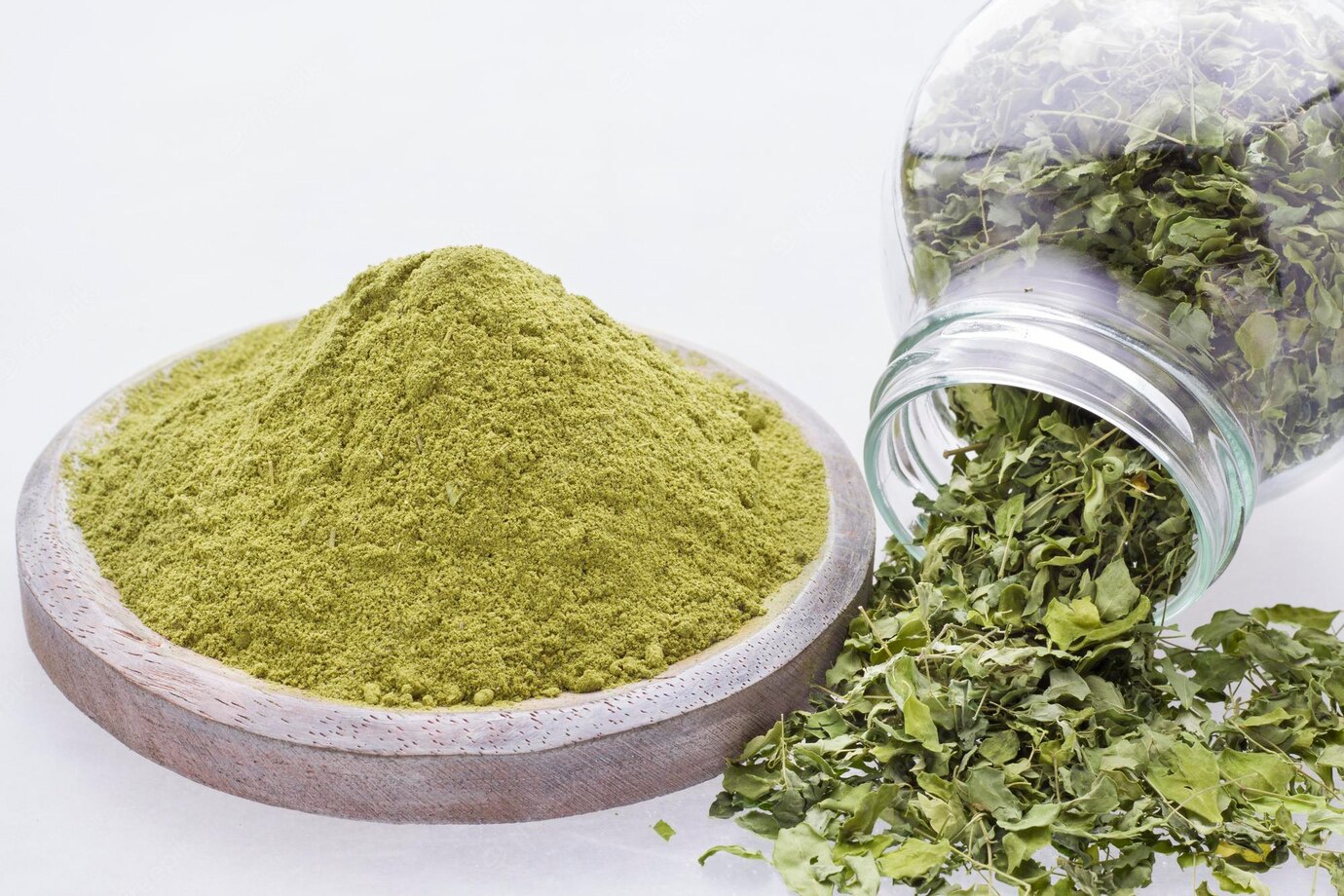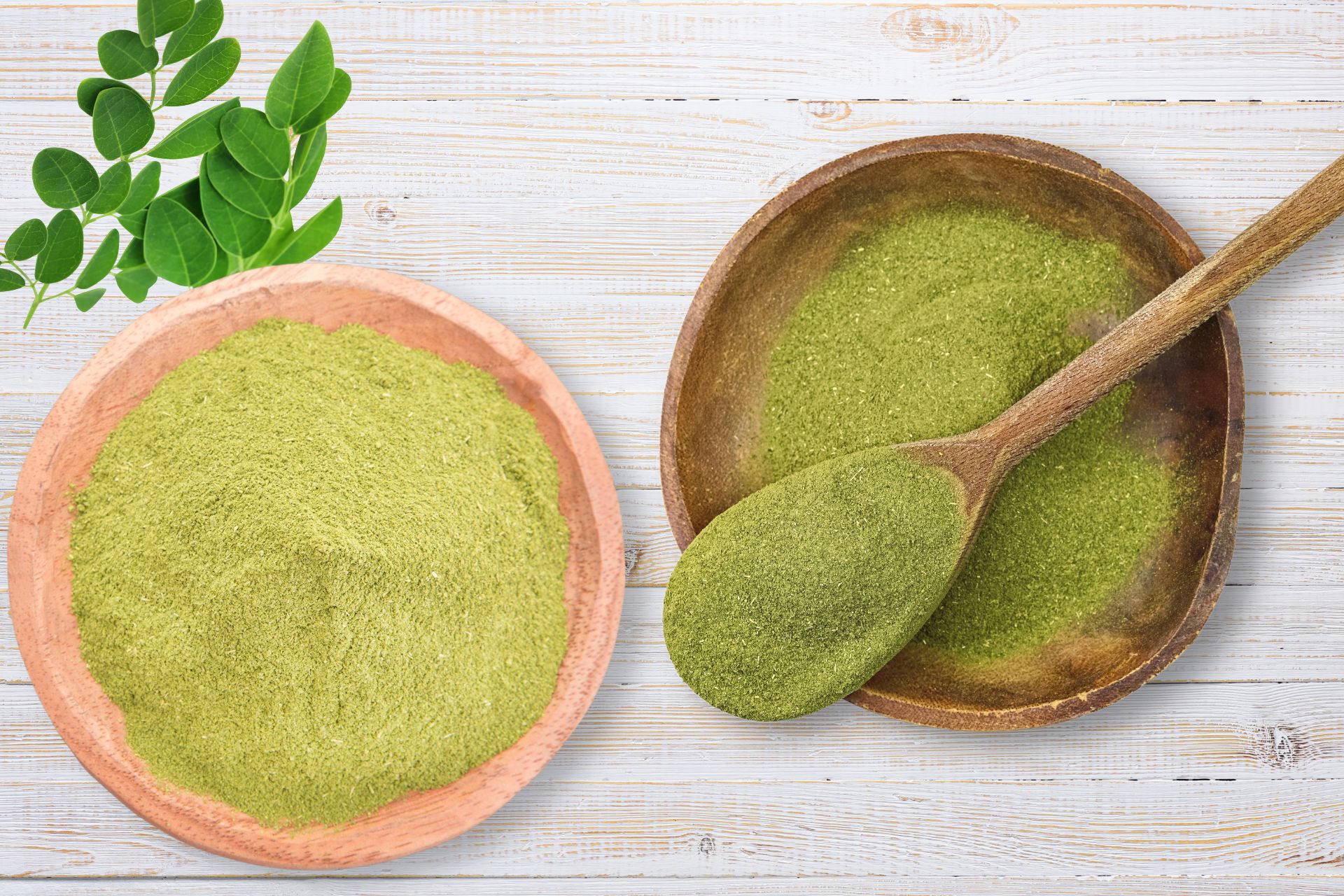Kratom vs. Moringa: Differences, Similarities, and Which to Choose

Contents
Keep reading to discover all about moringa and kratom herbs. We explore the differences between them, their similarities, and potential benefits.
Let’s dive in.
What is kratom?
Kratom, scientifically known as Mitragyna speciosa, is a tree grown in many Southeast Asian regions. It’s indigenous to countries like Thailand, Myanmar, Indonesia, and Malaysia.

This plant is taking the world by storm as more people attest to its miracle effects, which include medical and recreational benefits. Apart from aiding with mental and physical afflictions, some users also report getting high on kratom.
Workers harvest the leaves once they’ve reached ideal maturity. They then dry and crush them into a fine powder. There are a few ways to consume the final product:
- Chew the leaves
- Brew the leaves into teas
- Mix the powder into smoothies
- Take the powder with water
- Use capsules or extracts
Kratom has three distinct vein colors: red, green, and white. The hues depend on the maturity of the leaves, with red being the oldest, white the youngest, and green sitting in between.
The colors aren’t just for show; each shade has slightly differing effects. Being the most mature, red is the more potent of the three shades. It’s advised for beginners to start with white or green, the less intense kratom types.
The effects associated with red strains include:
- Relaxation
- Stress relief
- A higher sense of well-being
- Optimism
- Reduced muscle tension
Green strains have slightly differing effects:
- Mild energy boost
- Alertness
- Focus
- Treatment of discomfort
- A decrease in feeling uncomfortable during social situations
White varieties deliver slightly different effects as well:
- Energy
- Mood enhancement
- Sharpness and alertness
- Motivation
- Concentration
- Endurance
The name of the strain depends on its color and region of growth. Here are the main kratom variants, named after their area of origin:
- Malay: Aids in treating tension
- Sumatra: Aids in relieving stress
- Maeng Da: Energy boosts and moon-enhancing effects
- Borneo: Relaxing and euphoric
On a molecular level, kratom leaves have a specific alkaloid count. The presence and intensity of these compounds depends on the variant you’re working with. Green has the most balanced alkaloids of the three primary hues.
There are over 40 alkaloids in a kratom leaf, with 7-hydroxymitragynine and mitragynine being the primary compounds. Here are a few aspects that affect alkaloid levels:
- Growing conditions
- Harvesting time
- How the leaves are dried
- Method of harvesting
- Soil composition
- Growing season
- Weather patterns
As for the recommended dosage, beginners should start with 1–5 grams to experience low to moderate effects. For more intense results, 5–15 grams is ideal. We advise not to take a higher dose than 15 grams.
What is moringa?
Moringa oleifera is a plant grown in North India, Asia, Africa, and South America. The trees are large and have other names, such as ben oil, horseradish, and drumstick tree. This herb is rich in bioactive compounds and healthy antioxidants.

Growers harvest and use most of the tree, typically for traditional herbal medications. Natives in India and Africa commonly consume the leaves and pods of the Moringa tree. Westerners dry the leaves and sell them as dietary supplements in capsules or as powder.
This tree is a superfood with several nutritious vitamins and minerals, including:
- Vitamin A
- Vitamin B6
- Vitamin C
- Iron
- Protein
- Riboflavin
- Magnesium
The pods of the Moringa oleifera tree typically contain fewer nutrients than the leaves. They are, however, rich in vitamin C, more than your daily requirement. The supplements also tend to have fewer minerals, so taking the leaves raw is ideal.
Moringa is safe to use and rich in antioxidants, compounds that protect your cells from free radicals. Here are some antioxidants found in this plant:
- Quercetin
- Beta-carotene
- Chlorogenic acid
A study shows that seven grams of this supplement, taken every day for three months, may increase blood antioxidant levels. Due to oxidation-reduction, moringa may act as a food preservative.
You may experience lower blood sugar levels when taking moringa. Inflammation may also reduce with the use of this herb. Some report their cholesterol levels lowering when consuming this plant.
The main differences between moringa and kratom
Now you know all about moringa and kratom, you’re probably wondering how they differ. You’ll find both pure powdered kratom and moringa on the market, as well as capsules and extracts.
The fundamental difference between the two plants is their active ingredients. Kratom has alkaloids like mitragynine and 7-hydroxymitragynine, while moringa contains moringinine, quercetin, and chlorogenic acid.
Here are some effects of Mitragyna speciosa that differ from Moringa oleifera:
- Focused mood
- Stress reduction
- Sleep improvement
Moringa has a more subtle effect compared to kratom. After a few repeated measures, you may notice slight differences in the sensations. While the two have similar recommended portions, kratom is the one that has dose-dependent effects.
Kratom is commonly used as a recreational product, while moringa is more of a holistic supplement. The latter purportedly has more health benefits than the former, but Mitragyna speciosa is more potent.
Kratom is a relatively new product on the US market, whereas people have used moringa since the Middle Ages. Moringa also has properties that affect aspects other than humans; it can purify water.
Moringa and kratom similarities
Moringa and kratom have more similarities than differences. For starters, both plants grow natively in various regions of Asia. They also kick in around 20–30 minutes after consumption and last 6–8 hours.

Here’s a breakdown of the main similarities:
- Natural products
- Leaves from trees
- Recommended dosage of 2–12 grams per day
- Same price range
They also have some similar effects:
- Energy boost
- Reduced discomfort
You can take the products in similar ways:
- Brew or boil into tea
- Take as a powder
- Take as capsules
- Sprinkle leaves or powder on food and drinks
Kratom vs. moringa: Which is better?
With all this information, which should you choose when looking at kratom vs. moringa? Both of these green powders are beneficial for your health, even though they have slightly different uses.
Kratom is known for boosting energy, whereas moringa’s primary purpose is to assist in providing nutrients to the body. The former has more immediate and noticeable effects and can last hours without causing fatigue.
Both herbs are unique in their own way, so to determine which is better, identify what effects you want. For a fast vitality boost, choose kratom. For more health-beneficial results, choose moringa.
If you have difficulty deciding, there’s no issue in mixing them. A combination of the two results in a blend of the differing effects. Having kratom and moringa tea may have positive benefits on your physical and mental health.
Always consult a doctor before adding new supplements to your diet. A professional can help you find the right product while ensuring it doesn’t interfere with any current medication.
The leaves of truth
So, what’s the verdict on kratom vs. moringa? Although they have some slight distinctions, these two plants share many similarities and may positively affect your mind and body.
Both herbs are widely used, and you can mix them together for the best of both worlds. Check out our store for pure, safe, and potent kratom supplements.
About the Author

Camila Millson is an experienced technologist of quality kratom products. She has over five years of working experience at Kratom Country.
Camila specializes in making kratom capsule technology. She also has extensive experience in developing technology for kratom tea.
Working for a large company, she is involved in the manufacturing processes of kratom powder, capsules, and other products. As well, she is knowledgeable about kratom legalization and can advise clients on these issues.

Comments